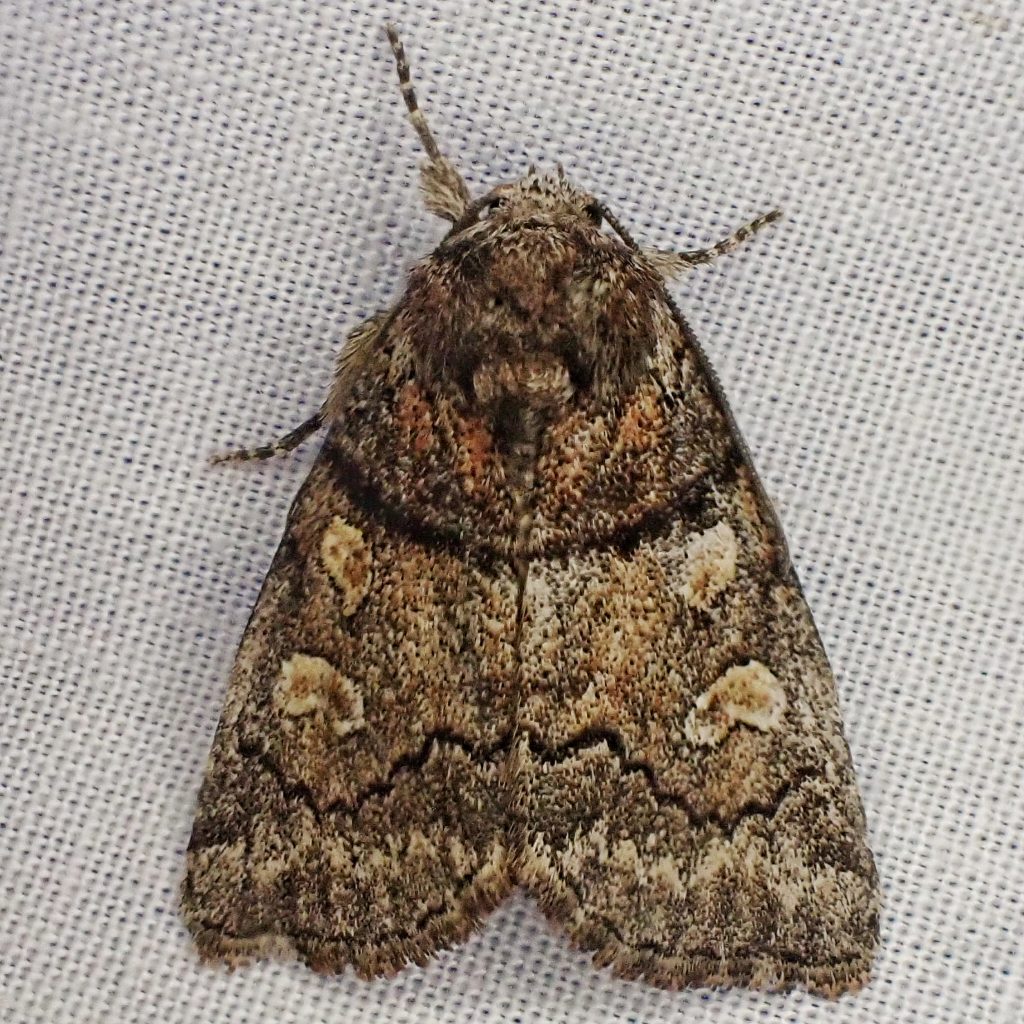
During moth week I was visited by at least one (and usually many) of these handsome noctuids every night that I was out, probably because I was never far from some population of Douglas-firs (in Clark County, Washington, one would have to make a concerted effort to be more than a quarter mile from a Doug-fir), which are one of their primary larval hosts. This species has a wide variety of color combinations, and in self defense I fairly quickly came to recognize the combination of a smoothly rounded antemedial line, and a jagged and jutting postmedial line.
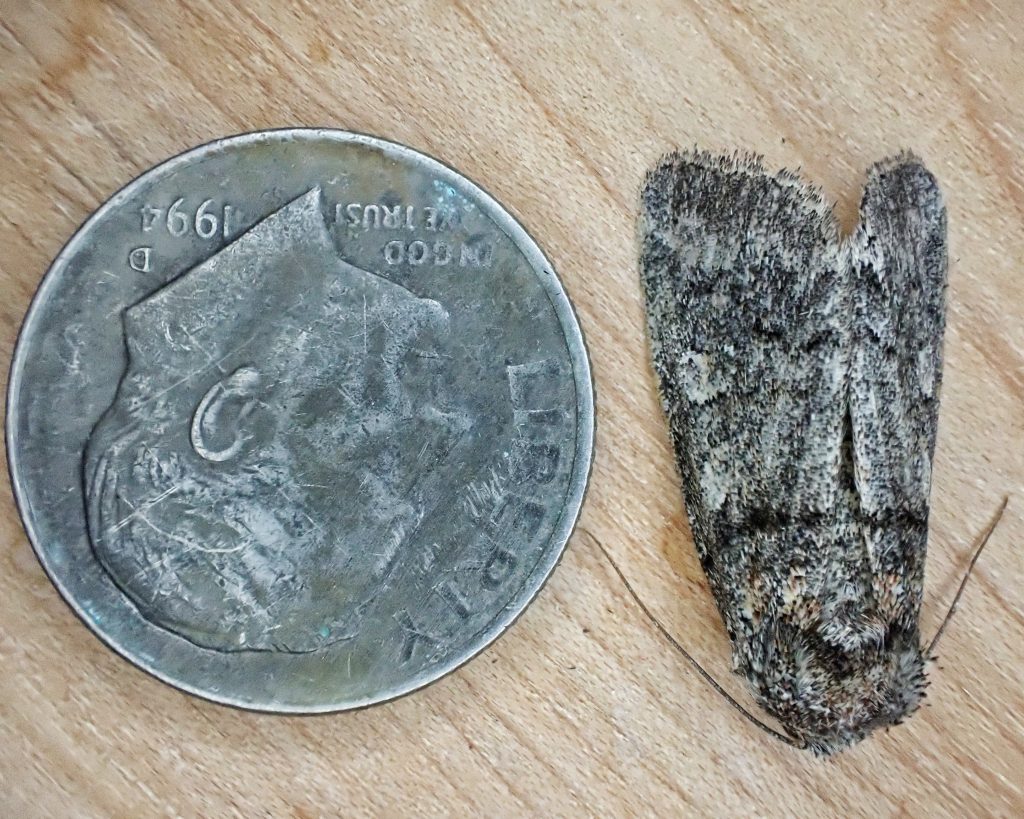
However I did not bother photographing even a fraction of the ones that did come to worship at the Temple of Ultraviolet Light, because they were nearly ubiquitous. And I may have missed another Cosmia with similar ante- and postmedial lines, Cosmia elisae, because I wasn’t really looking at how deeply indented the reniform spot was, or the color of the hindwing, and I was under the mistaken impression that C. elisae was only found east of the Cascades. But I am, at least, sure that all of the moths shown here are Cosmia praeacuta.
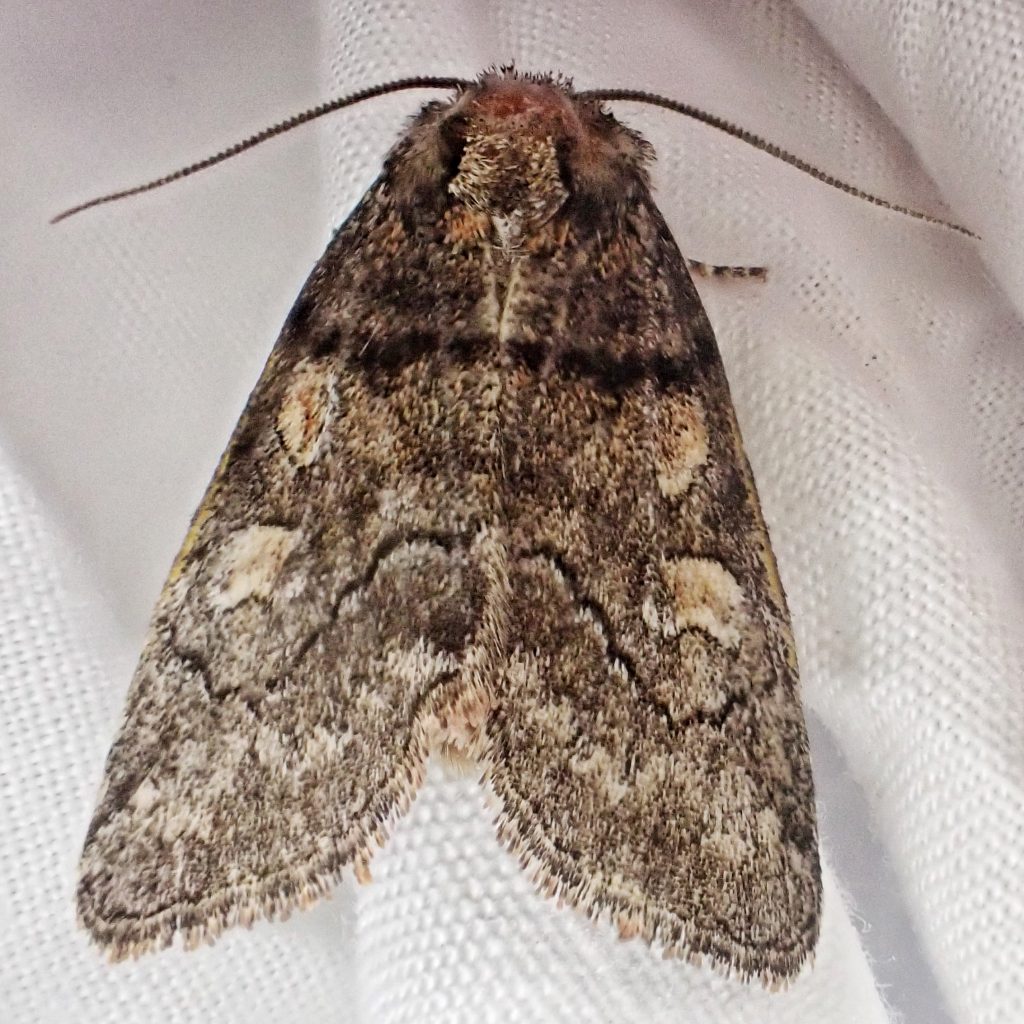
Description– “Adult: forewing medium gray (to almost black out to subterminal line in some individuals) with distinct black lines and black-rimmed spots filled with ground color; reniform spot slightly curved (but not bent into V shape as in C. elisae); orbicular spot oval or irregular-shaped, sometimes connecting to reniform spot; orbicular and reniform spots usually filled with yellowish to reddish-brown with some gray shading; claviform spot narrow, small, or absent; AM line thick/heavy, slightly arc-shaped or almost straight; PM line irregular, with inconspicuous teeth; subterminal line irregular, jagged, sometimes with paler shading beyond it; terminal line usually continuous, sometimes broken into black dashes; diffuse dark spot near anal angle; hindwing medium to dark gray; fringe pale.” Species Cosmia praeacuta – Hodges#9814 – BugGuide.Net; “This species demonstates geographic variation in the Pacific Northwest. Populations from the western part of our region are much darker than those from east of the Cascade Mountains, frequently black with contrasting pale and reddish markings. The name nigramacula Barnes and Benjamin is available for these populations for those that wish to use subspecies…Larva is smooth, green with middorsal, subdorsal, and lateral white stripes. It is illustrated by Miller & Hammond (2003) under the name of Achytonix epipaschia.” PNW Moths | Cosmia praeacuta
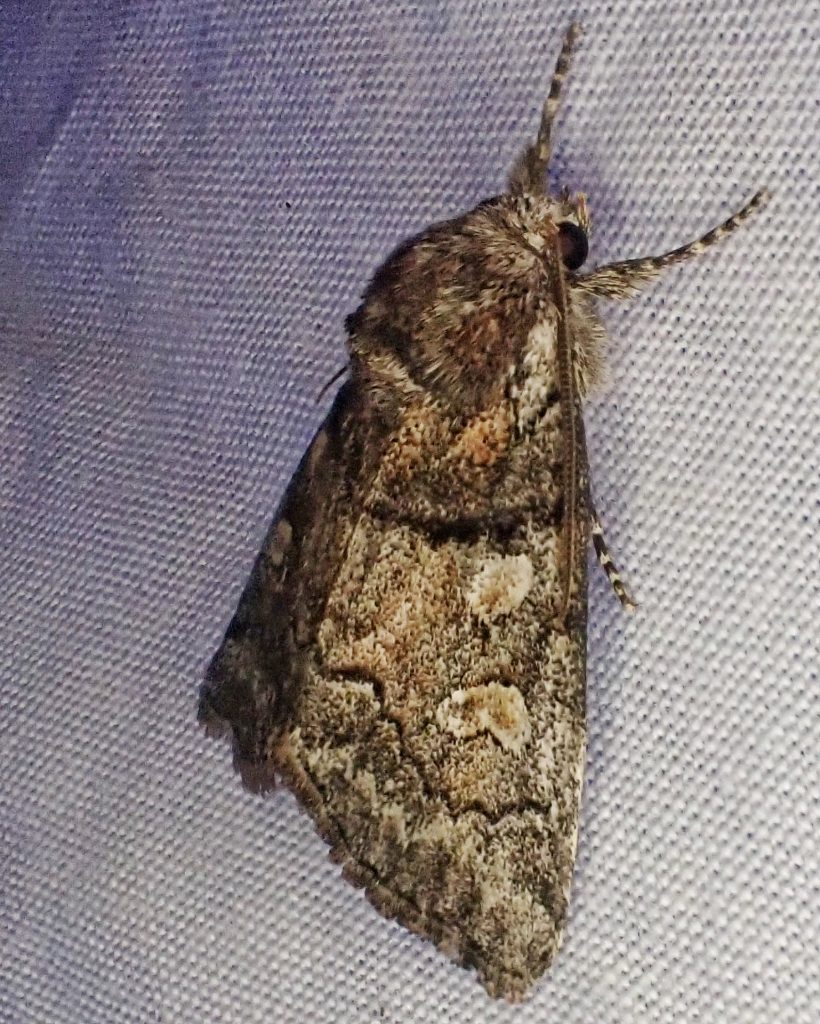
Similar species– “This species can be identified by the combination of even gray to black forewing with thick excurved antemedial line, uniform light gray, ochre, or orange spots, and dark hindwing. It is most likely to be confused with Cosmia elisae, especially east of the Cascade Mountains where the forewings of C. praeacuta are lighter gray. These species are most readily distinguished by the color of the hindwings. Those of C. praeacuta are uniform dark gray while those of C. elisae are mottled light and dark gray. The lateral reniform spot of C. elisae is more deeply indented than that of C. praeacuta. Melanic specimens of C. praeacuta from west of the Cascades are unlikely to be confused with other moths.” PNW Moths | Cosmia praeacuta
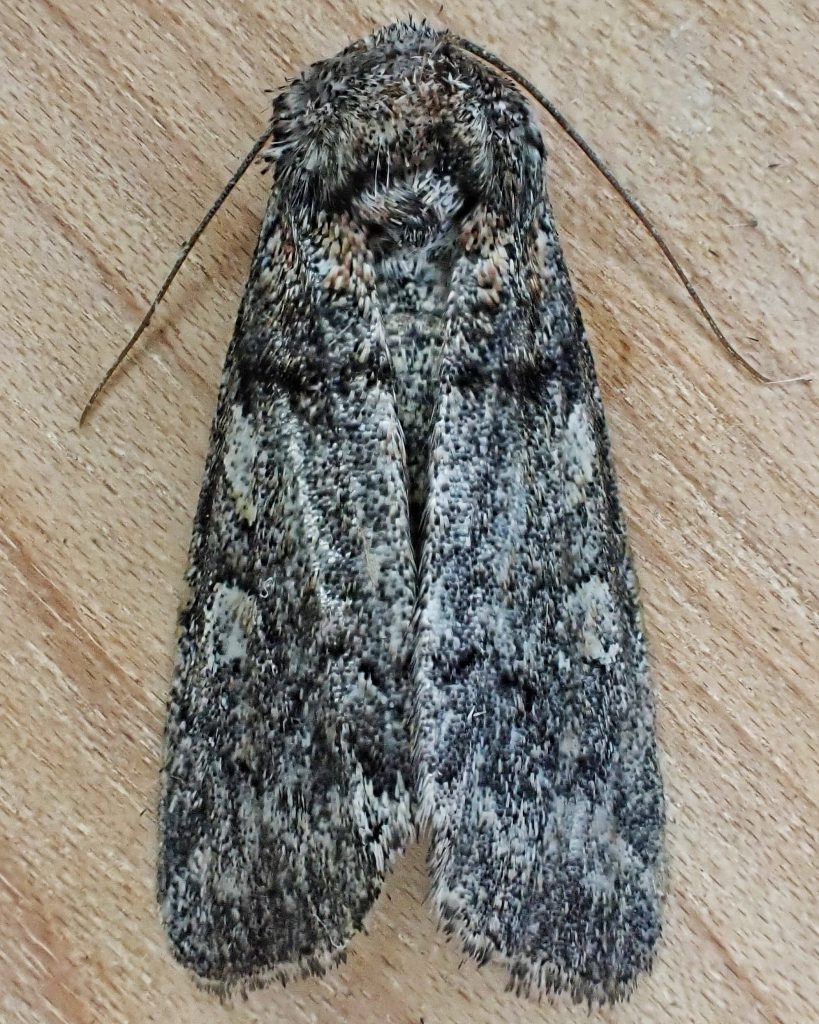
Habitat– “This species is widely distributed in moist coniferous forests throughout much of western North America. In the Pacific Northwest, it is particularly abundant in coastal rainforests and mixed hardwood-conifer forests of the Coast Range and along the west slope of the Cascades. However, it is also common in subalpine spruce-fir forests along the summit of the Cascades, and in Douglas fir forests of the Siskiyou and Rocky Mountain regions.” PNW Moths | Cosmia praeacuta
Range– “This species occurs from western Alberta and the Pacific Northwest south to Colorado, Arizona, and California…Cosmia praeacuta is widespread in conifer forests throughout our region, occurring as far north as southern British Columbia. It is widespread west of the Cascade Mountains.” PNW Moths | Cosmia praeacuta
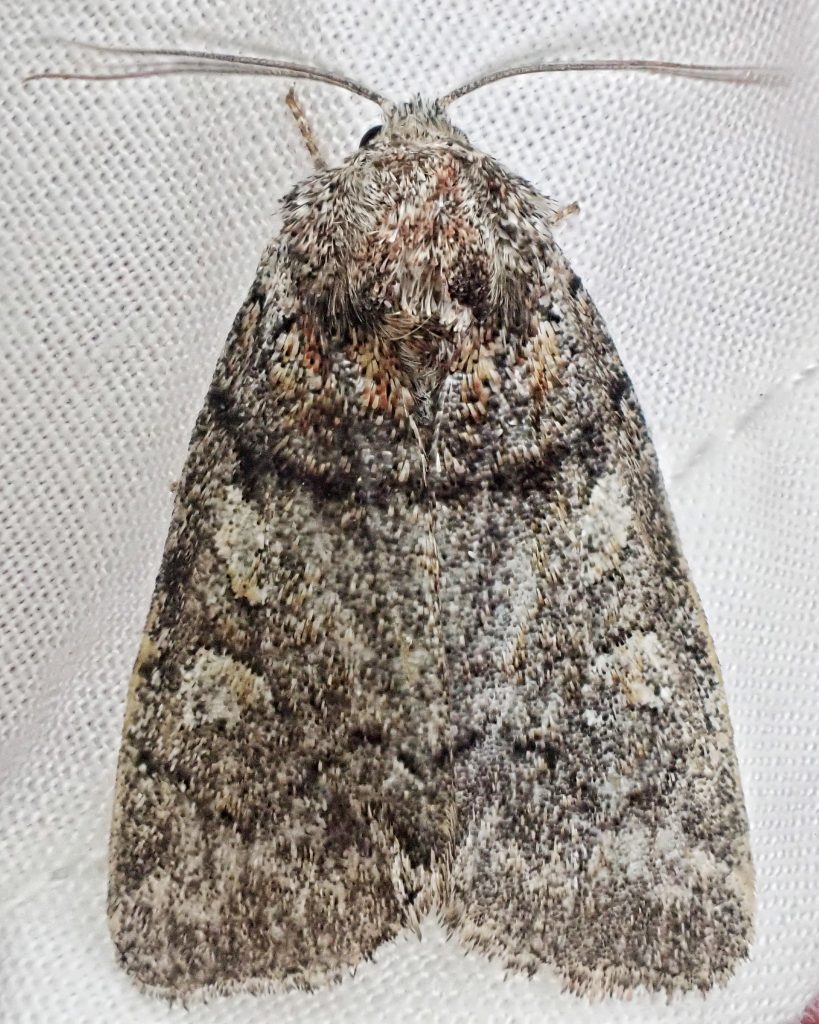
Eats– “This species is a foodplant specialist feeding on Douglas fir (Pseudotsuga menziesii) and true firs (Abies spp.) in the Pinaceae. A few foodplant records on Engelmann spruce (Picea engelmannii) are reported by Lafontaine and Troubridge (2003).” PNW Moths | Cosmia praeacuta;larvae feed on early buds, then switch to fresh foliage.
Eaten by– Presumably a host for parasitoids in Hymenoptera and Diptera, and probably preyed upon by insectivores of all classes, but I can find nothing specific for this species.
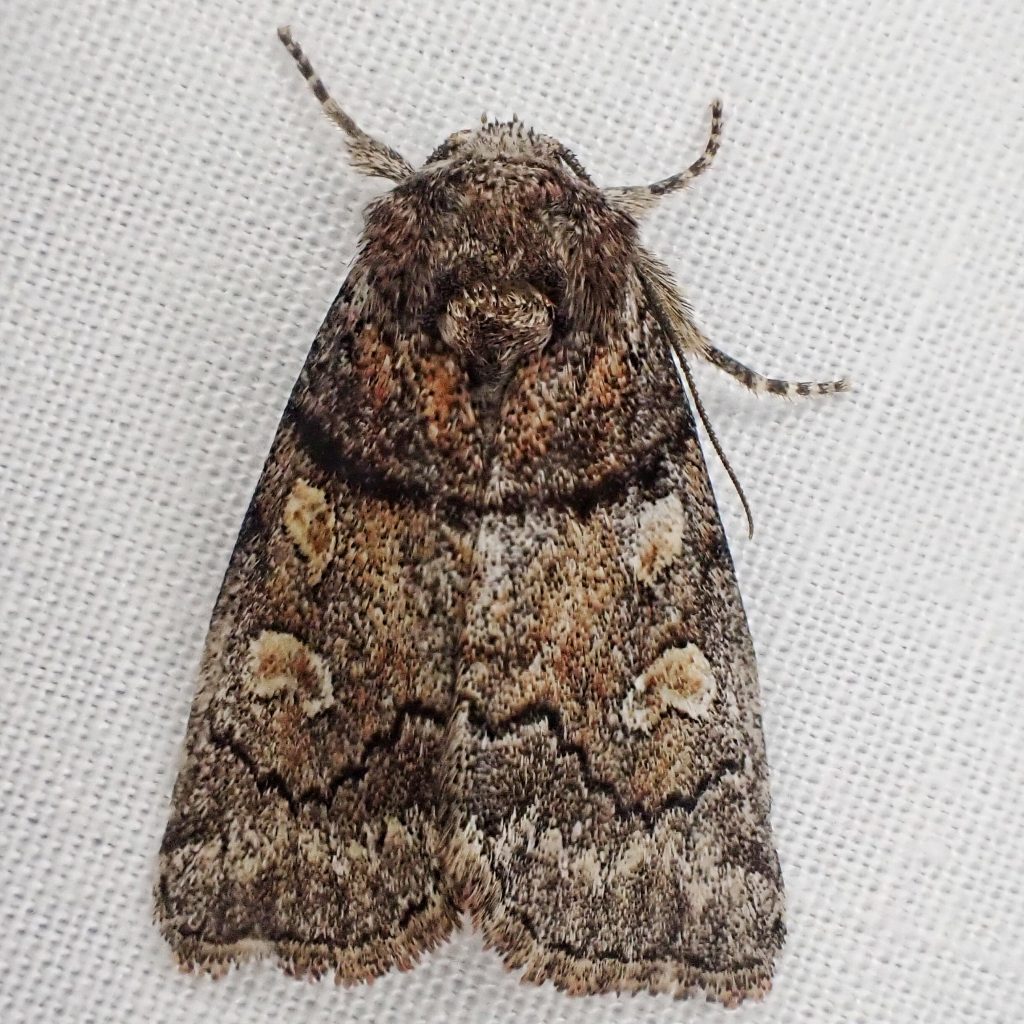
Adults active-“…adults on the wing in late summer and early fall. The records from our region are from mid-July to mid-September. It is nocturnal and comes to lights.” PNW Moths | Cosmia praeacuta
Life cycle– Univoltine, and based on when the larvae appear (May-July), they probably overwinter as eggs.
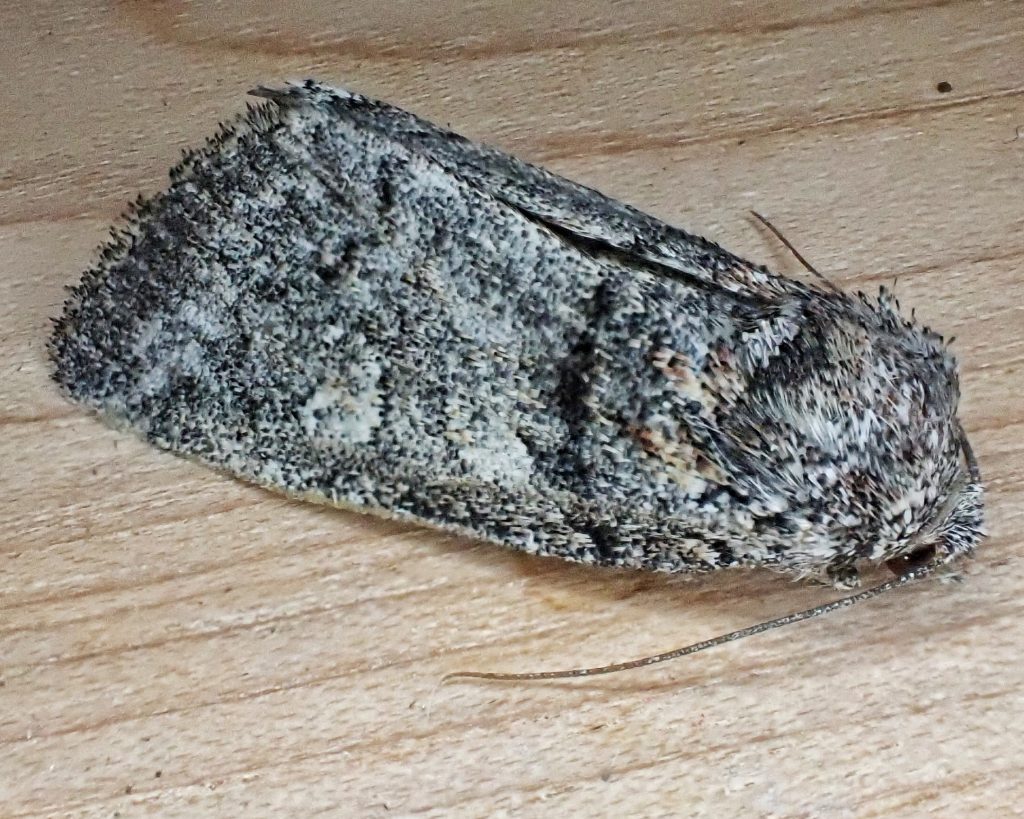
Etymology of names– Cosmia may be from the Greek word for ‘adorned’ (according to ‘An Accentuated List of the British Lepidoptera, with Hints on the Derivation of the Names”; multiple authors; 1858), or it may be from the Greek word for ‘well ordered/becoming (according to “The Scientific Names of the British Lepidoptera: Their History and Meaning”; A. Maitland Emmet; 1991)- apparently Ochsenheimer wasn’t clear about his reference. The specific epithet praeacuta is from the Latin prefix for ‘before’, and the Latin word for ‘sharp/pointed’, and though JB Smith mentions that the postmedial line is “…acutely angulated outward in the cell…”, he doesn’t actually state that that angulation is what praeacuta refers to.
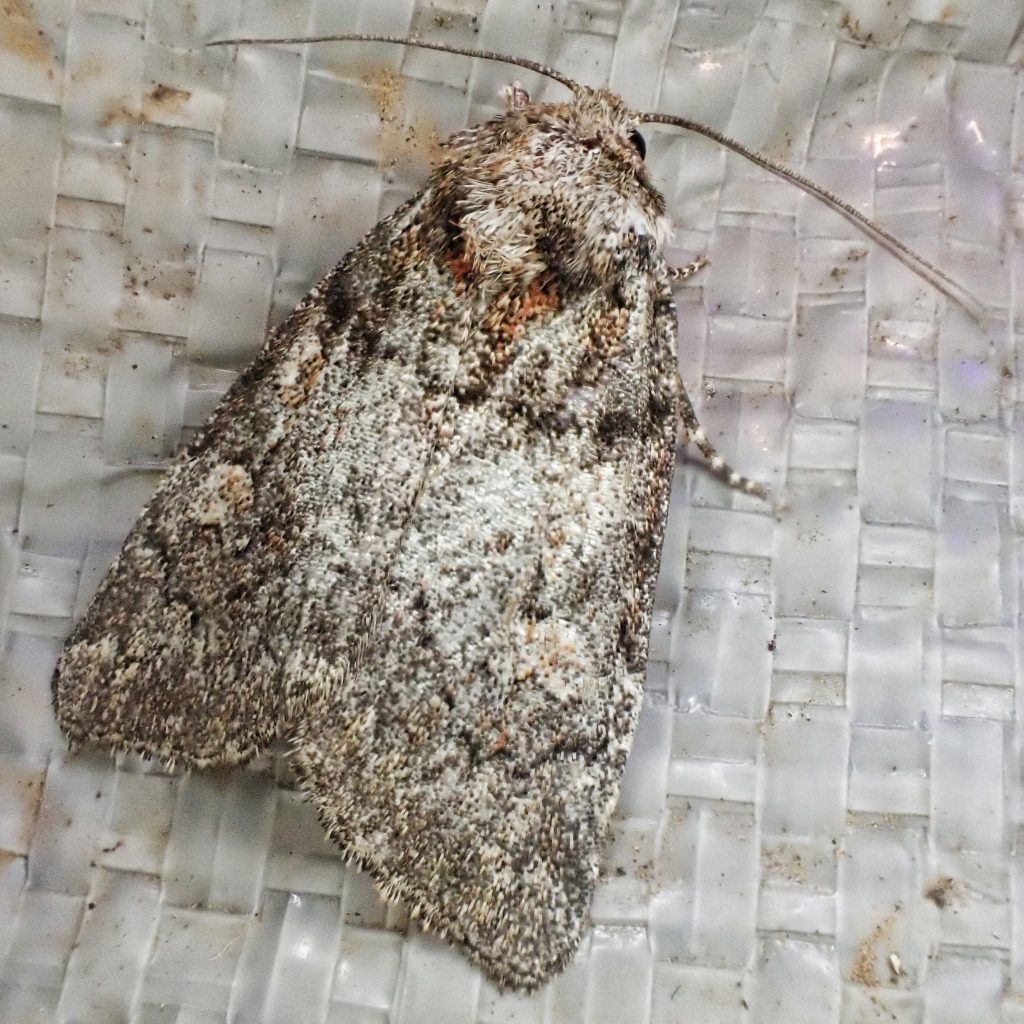
Species Cosmia praeacuta – Hodges#9814 – BugGuide.Net
http://mothphotographersgroup.msstate.edu/species.php?hodges=9814
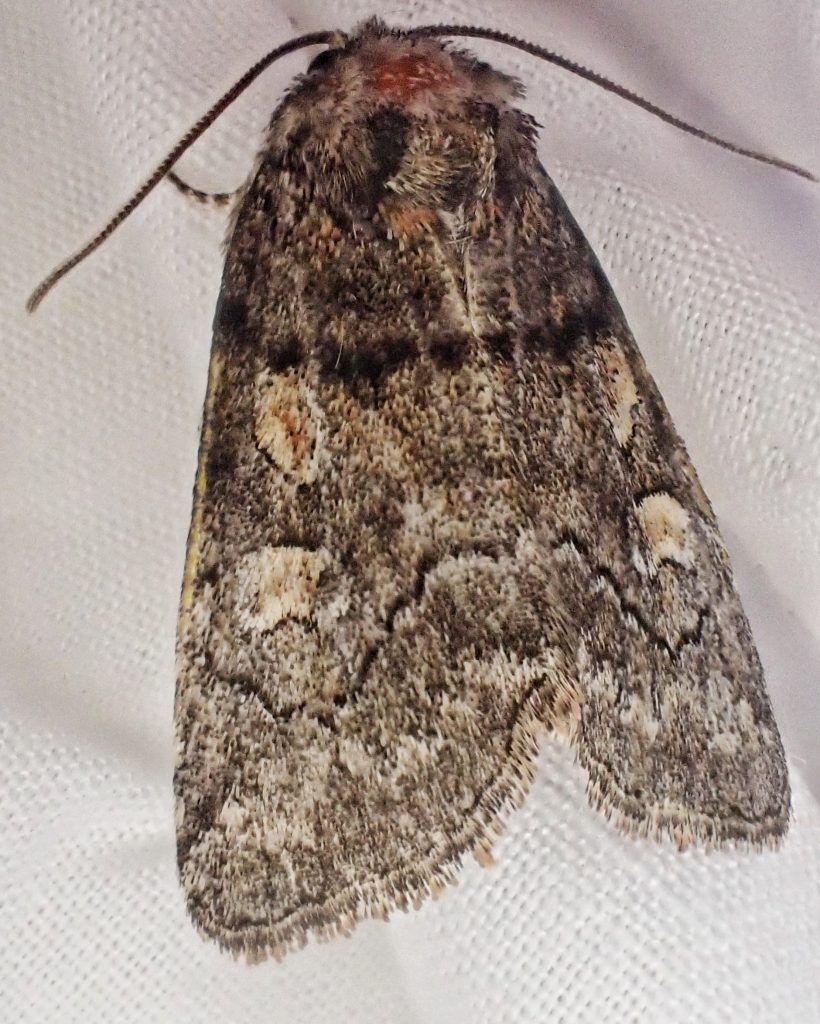
It had a long season and was quite common here this year. Thanks, Dan!
Glad to hear you enjoyed it, Glenn!